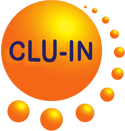Remediation Technology Demonstration Project Profiles
In Situ Bioremediation Using Aerobic Cometabolism Technique at a Dow Chemical Facility in West Virginia
Last Updated: December 9, 2004 |
||
| Site Identifying Information | ||
| Site Name, Location: | Dow Chemical Company Site, South Charleston, West Virginia, United States
(EPA Region 3) |
|
| Cleanup Program: | Not Specified | |
| Entity Responsible for Cleanup: | Not Specified | |
| Site Type: | Railyard | |
| Government Affiliation: | Non-Federal | |
| | ||||||||||||||
| Project Information | ||||||||||||||
| Project Name: | In Situ Bioremediation Using Aerobic Cometabolism Technique at a Dow Chemical Facility in West Virginia | |||||||||||||
| Project Status: | Ongoing | |||||||||||||
| Contaminants Treated: |
| |||||||||||||
| Media Treated: |
| |||||||||||||
| Demonstration Technology and Type: | Bioremediation (In Situ) (In Situ Biological) |
|||||||||||||
| Geology and Hydrogeology: | Geology at the site is poorly sorted fine to medium grained sand to a depth of 60 feet. Depth to water is approximately 20 feet below ground surface, and the zone of highest groundwater concentrations of COI is within the top 20 feet of the aquifer. Hydraulic conductivity is approximately 10-3 cm/s and extremely flat (less than 20 feet/year). The hydraulic grade is extremely flat, with a horizontal migration at the site of less than 20 ft per year. | |||||||||||||
| Demonstration Start Date: | 05/2002 | |||||||||||||
| Demonstration Year: | 2003 | |||||||||||||
| Year of Publication: | 2003 | |||||||||||||
| Goal of the Demonstration: | To test and develop a technique that simulates and enhances the successful aerobic cometabolism observed at other portions of the site. | |||||||||||||
| Design and Operations: | The field test incorporates multiple processes designed to concentrate carbon tetrachloride and trichlorofluoromethane from the impacted aquifer into an aerobically bioactive zone at the interface between saturated soil and the vadose zone. This process relies on the accumulation of carbon tetrachloride and trichlorofluoromethane into the soy oil matrix through the liquid/liquid extraction properties of SG5000. Two tests were conducted using SG5000. Following the injection of SG5000 during each test, the mixture was dispersed in the vicinity by air sparging for approximately 2 hours. Air sparging was stopped for 24 hours to allow static upward migration of SG5000, and then restarted and operated continuously for the remainder of each test. The first test began in May 2002 and included the injection of 55 gallons of SG5000 mixed with 110 gallons of water into each of the two injection wells (air sparge wells) at approximate depths of 20 feet. One of the wells was sampled prior to injection and 5 additional times during the 8-month test. The second test began in October 2002 and included the injection of SG5000 at 6 additional locations, which expanded the test area to cover the entire area targeted by the original air sparging/soil vapor extraction system. Three of the locations were completed in the same manner as the first test, utilizing existing air sparge wells for injection followed by forced air dispersal and continuous post-injection sparging. At the other 3 locations, SG5000 was injected through temporary wells installed using direct-push drilling techniques. The forced air dispersal and sparging were not conducted at these 3 locations. | |||||||||||||
| Performance Data Relevant to Demonstration Goals: | By the end of the first test, carbon tetrachloride and trichlorofluoromethane had been reduced by more than 99% from pre-injection concentrations of approximately 15,000 µg/L. It was also noted that chloride and total organic carbon (TOC) concentrations increased significantly following the injection, while dissolved oxygen (DO) decreased dramatically. The decreases in DO occurred during a period of continuous sparging, suggesting that all available oxygen provided by the injection of 10 cubic feet per minute of ambient air to a depth of 20 feet below the water table was being consumed by biological degradation of SG5000. A monitoring well approximately 30 feet from the injection wells showed an 86% reduction in trichlorofluoromethane and a 57% reduction in carbon tetrachloride. TOC and DO concentrations suggest that this well is located near the outer limits of the radius influence of the injection points. During the second test, observations similar to the first test were made. Dramatic reductions of carbon tetrachloride and trichlorofluoromethane were observed at the locations that used air sparge wells and forced air dispersal. One well showed a 99% reduction in trichlorofluoromethane. Carbon tetrachloride concentrations in the same well decreased significantly 2 months prior to the second test. This decrease is possibly associated with the first test injection that occurred 3 months earlier at approximately 50 feet away. TOC and chloride concentrations increased significantly. These results were not observed for the direct-push locations; carbon tetrachloride and trichlorofluoromethane, chloride, and TOC concentrations did not change significantly. This is likely due to the inadequate dispersion of SG5000.Average concentrations of carbon tetrachloride and trichlorofluoromethane in all historically sampled wells at the site were reduced by 93% and 91%, respectively. The project area continues to be monitored for the following parameters: carbon tetrachloride and trichlorofluoromethane, DO, oxygen reduction potential, and TOC. A full-scale site wide test has been initiated at a second project area and includes the application of oxygen release compounds at part of the site to evaluate its potential as an alternative to air sparging. A third test location is in the planning stages in Kansas City. | |||||||||||||
| Interesting Aspects or Significance of the Demonstration: | Treatment of Recalcitrant Compounds | |||||||||||||
| Lessons Learned: | The methodology has significant potential for in situ treatment of chlorinated hydrocarbons and fluorocarbons that are typically recalcitrant under aerobic conditions. | |||||||||||||
| Other Demonstration Information (such as cost data, if available): | Historical operations in the site area dating to the late 1950s resulted in the presence of numerous compounds of interest (COI) in site soil and groundwater. The primary source of the COI is thought to be a rail car unloading area. Carbon tetrachloride and trichlorofluoromethane represent the majority of the COI mass at the site. An air sparging/soil vapor extraction system was in operation at the site from 1997 to 2001 and removed more than 20 tons of COI from the groundwater and overlying unsaturated material. Although the system was effective for significant contaminant mass removal, asymptotic levels of COI concentrations as high as 130 mg/L remained in the groundwater. In addition, the air sparging/soil vapor system was not cost effective to operate due to activated carbon being the only viable technology for off-gas control. A proprietary blend (SoyGold 5000) was selected for further evaluation based on bench-scale observations and desirable co-metabolite characteristics such as non-toxicity, biodegradability, specific gravity less than 1, affinity for extraction (partitioning) of carbon tetrachloride and trichlorofluoromethane into the co-metabolite, readily but temporarily miscible in water, minimal viscosity, cost-effectiveness and availability for bulk shipment and safety during handling, transport, and application. SG500 is a soybean methyl ester combined with a proprietary blend of FDA-approved direct and indirect food grade compounds. The product is available commercially from AG Environmental Products LLC under the brand SG5000 Biological Co-metabolite. | |||||||||||||
| Vendor(s) or Consultant(s) Associated with the Demonstration: |
Key Environmental, Inc. Dow Chemical Company AG Environmental Products |
|||||||||||||
| Information Source(s) for the Demonstration: |
Soy-Based Aerobic Cometabolism of Chlorinated Hydrocarbons and Fluorocarbons. Paper A-44, in: V.S. Magar and M.E.Kelley (Eds.), In Situ and On-Site Bioremediation - 2003. Proceedings of the Seventh International In Situ and On-Site Bioremediation Symposium (Orlando, Florida; June 2003). ISBN 1-57477-139-6, published by Battelle Press, Columbus, Ohio. http://www.battelle.org/bookstore# |
|||||||||||||
| Contact Information | ||||||||||||||
| Point(s) of Contact: |
Raymond Glenn Key Environmental, Inc. Carnegie, Pennsylvania, United States |
|||||||||||||
|
Jerome Cibrik Dow Chemical Company South Charleston, West Virginia, United States |
||||||||||||||
|
Bill Ayres AG Environmental Products Lenexa, Kansas, United States |
||||||||||||||
|
Don Blackert (Primary Contact) Key Environmental, Inc. Carnegie, Pennsylvania, United States E-mail: dblackert@keyenvir.com |
||||||||||||||
| | ||||||||||||||




